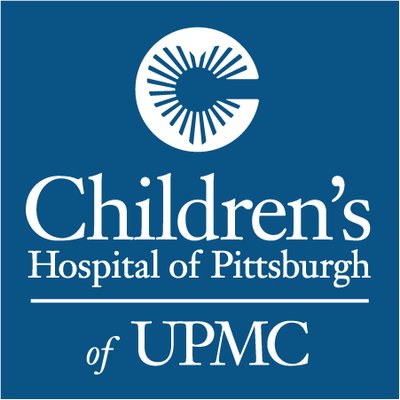MR Imaging of Perinatal Brain Injury
| Status: | Recruiting |
|---|---|
| Conditions: | Hospital, Neurology |
| Therapuetic Areas: | Neurology, Other |
| Healthy: | No |
| Age Range: | Any - 7 |
| Updated: | 2/3/2019 |
| Start Date: | April 2009 |
| End Date: | December 2025 |
| Contact: | Nancy H Beluk, RT |
| Email: | beluknh@upmc.edu |
| Phone: | 412-692-3217 |
Advanced MR Imaging of Perinatal Brain Injury: Correlation With Neurocognitive Outcome
The purpose of this study is to collect and compare information from cranial ultrasounds,
magnetic resonance imaging scans, neurological exam and neuropsychological assessments of
children. The investigators hope that the information collected in this study will help with
early screening, diagnosis and treatment of brain injury in newborns as well as identify a
connection between MR imaging (MRI-magnetic resonance imaging, MRS-magnetic resonance
spectroscopy) and neurodevelopmental outcome.
magnetic resonance imaging scans, neurological exam and neuropsychological assessments of
children. The investigators hope that the information collected in this study will help with
early screening, diagnosis and treatment of brain injury in newborns as well as identify a
connection between MR imaging (MRI-magnetic resonance imaging, MRS-magnetic resonance
spectroscopy) and neurodevelopmental outcome.
In the last two decades, major advances have been made in the clinical care of premature and
term infants, including in the management of sepsis and respiratory compromise that can
contribute to neurological disabilities in survivors. The incidence of classic cystic
periventricular leukomalacia (PVL) has declined and a more diffuse and non-cystic pattern of
cerebral white matter injury is more predominant. Although multiple pathologies occur in
premature infants, the principal variety accounting for the predominance of
neurodevelopmental disability is PVL. This disability in very low birth weight infants (VLBW)
(< 1500 grams) includes cognitive/behavioral deficits in 25-50% and cerebral palsy in 5-10%.
Neuroimaging studies of VLBW survivors suggest that the cerebral palsy is related to the
focal necrotic lesions of PVL, whereas the cognitive/behavioral deficits correlate with more
diffuse cerebral white matter injury. PVL is defined as damaged immature cerebral white
matter with periventricular focal necrosis ("focal" component) in association with diffuse
reactive gliosis and microglial activation in the surrounding white matter ("diffuse"
component). Of note, PVL occurs in the late preterm infant and the term infant, particularly
in cases of congenital heart disease. The pathogenesis of perinatal white matter injury is
currently thought to be related to a complex interaction between maternal/fetal infection,
cytokines and hypoxia-ischemia which results in both the generation of reactive oxygen
specific agents (oxidative stress), apoptotic oligodendrocyte cell death, and axonal injury.
In long-term survivors with PVL, neuroimaging studies often demonstrate reduced cerebral
white matter volume, impaired myelination, ventriculomegaly and reduced volume in the
cerebral cortex, thalamus/basal ganglia and cerebellum. In many of these long-term studies,
the preterm children studies had normal cranial ultrasound. Cranial ultrasound, however, is
not adequate for assessing non-cystic focal or diffuse white matter injury. To date, there
are no longitudinal MR studies of preterm or congenital heart disease infants which correlate
advanced neonatal MR imaging techniques with long-term neurodevelopmental outcome or advanced
MR techniques performed in the childhood period.
term infants, including in the management of sepsis and respiratory compromise that can
contribute to neurological disabilities in survivors. The incidence of classic cystic
periventricular leukomalacia (PVL) has declined and a more diffuse and non-cystic pattern of
cerebral white matter injury is more predominant. Although multiple pathologies occur in
premature infants, the principal variety accounting for the predominance of
neurodevelopmental disability is PVL. This disability in very low birth weight infants (VLBW)
(< 1500 grams) includes cognitive/behavioral deficits in 25-50% and cerebral palsy in 5-10%.
Neuroimaging studies of VLBW survivors suggest that the cerebral palsy is related to the
focal necrotic lesions of PVL, whereas the cognitive/behavioral deficits correlate with more
diffuse cerebral white matter injury. PVL is defined as damaged immature cerebral white
matter with periventricular focal necrosis ("focal" component) in association with diffuse
reactive gliosis and microglial activation in the surrounding white matter ("diffuse"
component). Of note, PVL occurs in the late preterm infant and the term infant, particularly
in cases of congenital heart disease. The pathogenesis of perinatal white matter injury is
currently thought to be related to a complex interaction between maternal/fetal infection,
cytokines and hypoxia-ischemia which results in both the generation of reactive oxygen
specific agents (oxidative stress), apoptotic oligodendrocyte cell death, and axonal injury.
In long-term survivors with PVL, neuroimaging studies often demonstrate reduced cerebral
white matter volume, impaired myelination, ventriculomegaly and reduced volume in the
cerebral cortex, thalamus/basal ganglia and cerebellum. In many of these long-term studies,
the preterm children studies had normal cranial ultrasound. Cranial ultrasound, however, is
not adequate for assessing non-cystic focal or diffuse white matter injury. To date, there
are no longitudinal MR studies of preterm or congenital heart disease infants which correlate
advanced neonatal MR imaging techniques with long-term neurodevelopmental outcome or advanced
MR techniques performed in the childhood period.
Inclusion Criteria:
- Preterm babies and neonates with congenital heart disease
- Term Neonates
Exclusion Criteria:
- Severe congenital brain malformation
- Significant chromosomal abnormality / syndrome which could confound the
neurodevelopmental follow up data
- Preterm birth and congenital heart disease
- Focal neurological abnormality
- Chronic seizures
- Severe congenital brain malformation
- Significant chromosomal abnormality/ syndrome which could confound the
neurodevelopmental follow up data
- Major pregnancy complication (diabetes, eclampsia)
- Sepsis
- ECMO
- Significant birth trauma and/or hypoxic ischemic injury
We found this trial at
1
site
4401 Penn Avenue
Pittsburgh, Pennsylvania 15224
Pittsburgh, Pennsylvania 15224
412-692-5325

Principal Investigator: Ashok Panigrahy, MD
Phone: 412-692-3217
Children's Hospital of Pittsburgh of UPMC UPMC is one of the leading nonprofit health systems...
Click here to add this to my saved trials